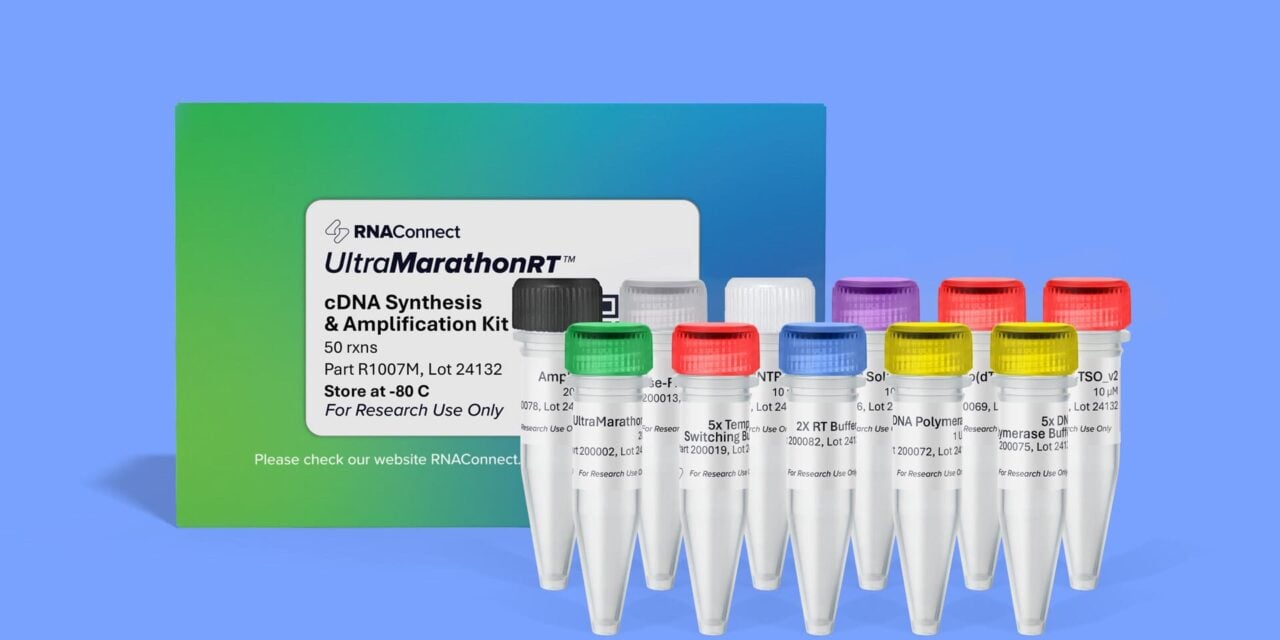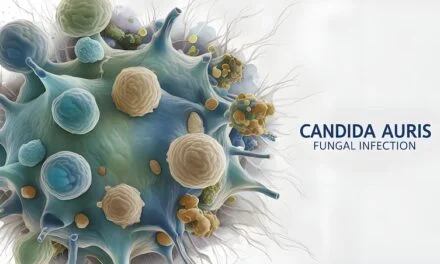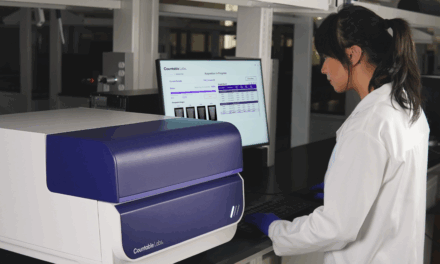A novel reverse transcriptase is designed to offer a more complete view of the transcriptome by overcoming decades-old technical hurdles in sample preparation.
By Alyx Arnett
While the speed and power of sequencing hardware have advanced, a critical step in RNA analysis has remained a significant bottleneck. RNA sequencing (RNA-seq) workflows have long relied on retroviral reverse transcriptases (RTs), such as MMLV, to convert RNA into complementary DNA (cDNA) for analysis. However, these conventional enzymes possess inherent limitations that can lead to an incomplete and biased picture of the transcriptome, according to Ryan Muldoon, co-founder and CEO of RNAConnect.
These enzymes are distributive by nature, meaning they frequently detach from and reattach to RNA templates. This process can result in incomplete cDNA copies, especially for long transcripts. Furthermore, Muldoon says conventional RTs often stall or fall off when encountering complex secondary structures or GC-rich regions in the RNA, causing these areas to be underrepresented in the final sequencing data. To overcome this, labs often resort to heating samples, but this can degrade the very RNA they are trying to analyze, says Muldoon.
A new enzyme class engineered for ultra-processivity aims to solve these long-standing challenges. According to Muldoon, whose company has developed one such enzyme, the goal is to provide a more faithful representation of the biological sample. “We’re excited to be able to help advance the field with our new enzymes,” Muldoon says, noting that recent data shows the technology enables “visibility into new sections of the transcriptome.”
Overcoming Technical Hurdles
RNAConnect’s new enzyme, UltraMarathonRT, is a Group II intron–derived reverse transcriptase designed to copy RNA transcripts from end to end in a single pass. Unlike retroviral RTs, it possesses an intrinsic helicase activity that allows it to unwind complex RNA structures without the need for high temperatures, says Muldoon. This enables it to work effectively at ambient temperatures, preserving sample integrity by avoiding heat-induced RNA degradation.
Muldoon says that this single-pass mechanism and ability to navigate structured regions address the primary sources of bias in traditional RNA-seq library preparation. By reducing stalls and generating full-length cDNAs, the enzyme produces a more even gene-body coverage and reduces the common three-prime bias that can skew quantification, particularly for long or complex transcripts.
Unlocking New Biological Insights
The improved data quality may allow laboratories to detect signals that might otherwise be missed. According to Muldoon, benchmarking studies have shown the technology can identify thousands more coding genes compared to MMLV-based protocols. It also enhances the detection of long, structured noncoding RNAs (lncRNAs), retained introns, and rare isoforms that are often lost during conventional cDNA synthesis.
This increased sensitivity, says Muldoon, extends to a broader dynamic range for gene quantification and improved coverage of mitochondrial transcripts. The ability to generate full-length cDNA provides clearer end-to-end isoform definitions, which are critical for accurate analysis of alternative splicing, promoter usage, and UTRs, says Muldoon, adding that this deeper view of the transcriptome may open the door for more comprehensive biological discovery.
Clinical and Research Applications
The ability to reliably detect rare isoforms or low-abundance lncRNAs could uncover novel markers tied to disease states. For cancer research, the technology can improve the detection of gene fusions and isoform-based biomarkers, Muldoon says.
He adds that other impactful areas include drug development, where researchers can better track splice-variant shifts and off-target transcript effects. The enzyme is also well-suited for quality control in the development of RNA therapeutics, allowing for precise assessment of product integrity and potential isoform contaminants. For labs working on single-cell studies, Muldoon says the ability to detect more genes and isoforms per cell is critical for applications like lineage tracing and detailed mitochondrial profiling.
According to Muldoon, the enzyme can be integrated into many existing workflows as a replacement for conventional RTs with minimal protocol edits. “While this is a new enzyme and there are many RNA-seq applications where additional optimization is needed, we are aggressively launching optimized kits that can be used for many of these applications,” Muldoon says.





